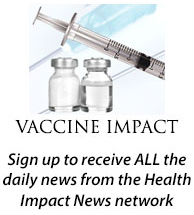By Dr. Mercola
Excerpts:
Eating a high-quality, nutrient-dense diet is one of the most powerful ways to maintain health and prevent disease. Your gut in particular needs proper nourishment in order to allow your health to really flourish.
Here, Hilary Boynton and Mary Brackett, authors of The Heal Your Gut Cookbook: Nutrient-Dense Recipes for Intestinal Health Using the GAPS Diet, shares helpful tips on how to “heal and seal” your gut so that profound healing can take place.
Hilary Boynton is a local food advocate and a certified holistic health counselor who runs several local food co-ops and teaches cooking classes out of her home.
Mary Brackett is a photographer and whole foods advocate who seeks out projects that illustrate the importance of healthy choices. Their cookbook is based on the Gut and Psychology Syndrome principles developed by Dr. Natasha Campbell-McBride.
The GAPS diet is often used to treat children with autism and other disorders rooted in gut dysfunction, but just about anyone with allergies or less than optimal gut health can benefit from it, as it is designed to heal leaky gut.
Both Mary and Hilary are on this diet, and when Mary attended one of Hilary’s cooking classes, she suggested the pair team up to create a cook book.
“One of the issues we had when we were both doing GAPS was that there wasn’t a resource book that was both inspiring and beautiful, that had great recipes, and that really laid out all the information on GAPS clearly and concisely,” Mary says.
“I think we were both constantly flipping through Natasha’s book because it’s unbelievably amazing. But because we’re both visual learners, we really needed something that was laid out a little bit differently.
Because that resource didn’t exist, we thought, ‘Okay, we’re going to take it into our own hands and we’re going to start doing it ourselves.'”
Why the GAPS Diet?
Hilary has five children. Her fourth child developed severe eczema at the age of two months, which they treated with Zyrtec and steroid cream. It worked, but as soon as she stopped using the cream, the eczema would flare up again.
“In my heart, I knew that that was not the answer. It’s simply a Band-Aid, not the solution,” Hilary says.
“Kristin Canty, my friend who created Farmageddon, said, ‘You’ve got to put him on raw milk.’ I said, ‘What is raw milk?’ Fortunately, there was a conference in Westford, Massachusetts, right down the road, [held] by Sally Fallon Morell…
I dove right in. I put him on raw milk and cod liver oil, and he was completely healed. That started my journey into nutrient-dense food… My kids have been really healthy on that diet.”
Another of her children has epilepsy, and it was in trying to address her daughter’s seizures that Hilary came across the GAPS diet. Mary, on the other hand, has struggled with stomach problems her entire life. She was diagnosed with irritable bowel syndrome (IBS) at the age of 16.
She eventually discovered the Weston A. Price Foundation and Sally Fallon Morell’s book Nourishing Traditions, but even after implementing those strategies, she still wasn’t healing.
“Then I had my son, who’s now four. When he was only a month old, the doctors found blood in his stool, indicating that there was some allergy of some sort. That point was when I really had to sit down, get serious, and figure this out,” she says.
After discovering and implementing the GAPS diet in her household, it took only a week before both she and her son began improving.
Most People Have Some Degree of Gut Dysfunction These Days…
The GAPS diet starts out as an elimination diet, which means taking out all inflammatory foods. This includes high-fiber foods, processed foods, and anything that is going to be difficult to digest.
By doing that, you lower the level of inflammation in your gut, allowing your body to begin to heal and thus be able to actually properly digest the food. A wide array of health problems stand to benefit from this kind of diet, as it addresses basic gut function.
Leaky gut is the root of many allergies and autoimmune disorders for example. When combined with toxic overload, you have a perfect storm that can lead to neurological disorders like autism, ADHD, and learning disabilities.
In 2005, an investigation by the Environmental Working Group (EWG) revealed the presence of 287 different toxins in the cord blood of 10 babies. Most babies born today also have compromised gut flora, setting the stage for a number of potentially serious health problems, including a heightened risk for allergies and vaccine damage. A woman can provide her child with the best possible head-start by cleaning out her own toxic burden and optimizing her own gut health before getting pregnant. It’s important to realize that the healing process can take some time though. It’s not an overnight fix.
GAPS Diet Introduction
The initial elimination portion of the GAPS diet has six stages, based on the digestibility of the foods allowed. If you’re healthy, you do not have to start at the very beginning. You could jump into the full GAPS diet, forgoing the initial elimination part of the diet.
But if you have any kind of autoimmune disease, allergies, asthma, autism, attention deficit disorder (ADD), eczema, psychological disorders, or other signs of gut dysbiosis, IBS, Crohn’s, or colitis, you must not skip this initial step. You start off with bone broth. Not only is it very easily digested, it also contains profound immune-optimizing components that are foundational building blocks for the treatment of autoimmune diseases.
I urge you not to dismiss bone broth, thinking that it’s either too simple to work, or too much of a hassle to bother with. Bone broth is truly a crucial component of healing your body of many of its ills. So, what’s the best strategy to acquire the raw materials to make this magnificent healing concoction? As noted by Hilary:
“You definitely want to get the best bones you can get—bones from pastured animals. If you can’t find a farmer in your area, reach out to your local Weston A. Price chapter leader… There are also resources to get homemade bone broth if you can’t make it yourself. …If you can only get CAFO bones [editors note: bones from animals raised in confined animal feeding operations or factory farms], I guess you go with that. You can still get some healing benefits. But it would be better to go with bones from pastured animals.”
Bone Broth—THE Staple of a Gut Healing Diet
You can make bone broth using whole organic chicken, whole fish or fish bones (including the fish head), pork or beef bones. Each will render a different flavor. Hilary and Mary suggest starting with chicken only because it has the mildest flavor. Beef tends to be more overpowering.
If you’re using chicken, simply place the entire chicken, raw, into a pot and cover with water. Add a small amount of vinegar to help leach the minerals out of the bones. Alternatively, you can use the carcass bones from a roasted chicken after the meat has been removed. You can also add vegetables of your choice into the pot. Don’t be afraid to add chicken feet and the chicken’s head, as they’re great sources of collagen. Pig’s feet are another good addition.
Bring it all to a boil, making sure to skim off the frothy bubbles that rise to the top as the broth begins to boil. Pay careful attention to this stage, as once the broth begins to boil the scum is rolled right back into the broth. The scum are the impurities that you want to remove. Then, turn down the heat and let it simmer overnight. (If you’re not comfortable with that, turn off the heat and let it sit overnight; then turn it back on and let simmer all day the next day.) All in all, it needs to simmer for 12-24 hours. A crock pot is an excellent way to go as this is less risky than leaving a burner on all night.
“You would want to bring it to a boil [on the stove], skim the scum, and then put it into the crock pot on Low heat. You’re not going to get it to a boil in the crock pot,” Hilary says.
In this elimination stage, which could take several weeks, your diet will revolve around bone broth with boiled meat and boiled, easily digestible vegetables such as carrots and zucchini. Then, you slowly begin to add in some organic pastured egg yolk, followed by avocado. Little by little, you start to add foods back into your diet, paying careful attention to any reactions.
Patience and Dedication Is Important if You Want to Heal
The severity of your gut dysbiosis will dictate how long it takes you to progress through each stage of the intro diet. If your gut is not too far gone, you can expect to move through each stage in about three to five days. It’s worth noting up front that you really need to be patient and consistent on this diet.
“When you do the intro, you can’t necessarily just stop cold turkey because your body is now in this healing process. If you’re in a few weeks of bone broth and soups and then say, ‘I’m going to go have a pizza. I can’t do this anymore,’ you are going to find yourself in a healing crisis. That’s why we always say you have to have a lot of patience,” Mary says. “It’s called die-off, and that’s what happens to the pathogenic bacteria,” Hilary adds. “You’re starving [the pathogens] in your gut.
Your body can experience all sorts of effects. We had every kid throw up within 24 hours. We thought, ‘Is this for real?’ Ours thankfully subsided after about 24 hours. My husband and I just felt like we were walking through mud for a week… and then that subsided. But people can have all sorts of symptoms of die-off, depending on how dire their situation is. But you just have to push through… Don’t make plans to go to any big parties or anything.”
While individual responses can vary widely, as a general guideline, many tend to experience this type of healing crisis upon embarking on the intro portion of the diet. The first week is typically the hardest, but symptoms should gradually subside throughout the intro. It is not advisable to progress to the next stage until you feel well enough to do so – even if that means staying longer than recommended in a particular stage.
“My biggest challenge was learning how to listen and trust that my body actually knows what’s good for it,” Mary says. “With GAPS, it gives you space and time to actually see how foods interact with your body. For me, listening to that was hard because I wanted to eat something and my body was saying no. I wanted to override it and I couldn’t. That process, it’s kind of a warning. It’s a dying out of the things you’ve maybe eaten your entire life. It’s a cultural shift. Food is so integrated into everything you do. You eat it every day. It maybe is not something that you think about, but food is the way in which we celebrate and it’s the way we sometimes mourn or deal with stress and things like that. It’s a big revolution that you end up changing the way you eat.”
Gut and Psychology Syndrome
Natural Treatment for Autism, Dyspraxia, A.D.D., Dyslexia, A.D.H.D., Depression, Schizophrenia
by Dr. Natasha Campbell-McBride









